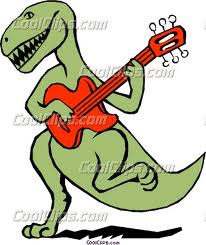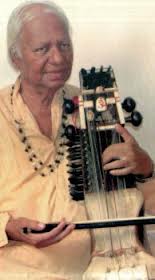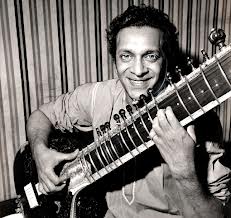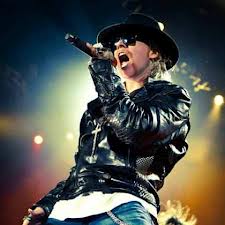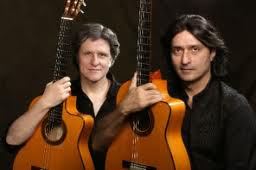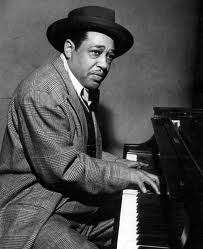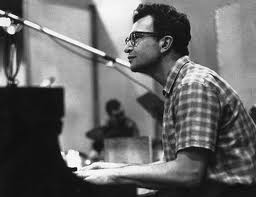Dinosaurus Rox: The year of the aging rockstar
(Image taken from: CoolClips.com)
AAH, the rock dinosaur! The favourite target of rock journalists who’ve never held a guitar, and of con-‘noise’-urs who can’t differentiate between A, B or C. Chords, not alphabets.
What are their grouses against these dinosaurs? Lots, actually. One, the history-minded critics point out that these dudes have been playing for 30, 40 or 50 years, or even since the 16th century, without showing any signs of retiring. Two, their snobbish hate club would sneer: “I’ve seen him regularly from 1967 to 1977, at all the venues in the world. He lost it after that but is still playing today to make money.” Finally, their poetry-minded foes might crib: “He is bloated, bald and broke. His voice sounds like a croak. He’s high from all that coke. His very existence is a joke.”
On top of that, these aging rockstars themselves hate being called dinosaurs. They still think they’re 17, going on 18.
Whatever, the anti-dinosaur anthro-apology club would be eating their words of hiss-dom today. Sadly for them, 2012 belonged to the rock dinosaur. Whatever their shape, size or senility, this breed of musicians has delivered some of the most creative music in the leap year gone by, reaching levels untouched by musicians 40 years younger.
Let’s begin with the oldest. Leonard Cohen, now 78. This Maharaja of Montreal isn’t R-O-C-K in the strictest sense, or in any sense, but he’s a dinosaur all right. In fact, he’s probably been called a dinosaur for 35 of the 45 years he’s played music. But being a man of old ideas, he released an absolute gem called ‘Old Ideas’. His voice sounded like he had a bout of chronic bronchitis, but how well it suited those songs! He’s been the world’s second-best singer-songwriter, after all.
That brings us to the world’s best singer-songwriter, outside of the Beatles. Robert Allen Zimmerman is what his parents named him, and Bob Dylan is what he named himself. At 71, he came out with this masterpiece called ‘Tempest’, filled with songs about the Titanic disaster, John Lennon, tyrants and murderers. His voice, to quote my earlier review, sounds like a cross between a morning brush gargle, an attack of whooping cough and bluesman Howling Wolf’s whisky-spruced wail. But lyrically and otherwise, this was a great set of songs, with simply no signs of adult Dylan-quency. He got five-star reviews in most publications, and these ratings definitely weren’t bought Bollywood-style.
Next, we come to two musicians born in 1947. That would make them 65 years young. The first is Carlos Santana. His last album was a guitar-based cover version catastrophe, and the previous three used every possible guest artiste existing on the scene. This time, he decided to do an instrumental album using influences as diverse as rock, jazz, Latin American and Cuban forms, European classical, Spanish flamenco and Hungarian folk melodies. Not as confusing as it sounds, and in fact, very listenable. Appropriately, he named it ‘Shape Shifter’.
Carlos also did two rocking shows in India. Yes, he doesn’t sing or prance around like his fellow dinosaurs and stands endlessly in the same position and pose with his guitar, but the energy he created with his younger band was unbelievable. And talking of energetic gigs, wannabe dinosaur Axl Rose gave Bangalore, Mumbai and Gurgaon some of their most memorable nights, 15 years after the world had written him off, and after his band had Slashed off the name of its famous guitarist. At his show, Axl packed a paunch, and packed a punch too.
Coming back to the 1947-born rockers, there’s Ian Anderson. Never too old to rock n’ roll., Mr Jethro Tull has done three visits of India over the past decade just to earn some beer money, and each time his live singing went from verse to averse and worse. Now, he had to gall to do a sequel to his 1972 classic ‘Thick As A Brick’. And hats off to him, he’s done a really good job. It may take 15, 25 or even 105 listens to get the hang of ‘Thick As A Brick 2’, but once you crack it, you just feel like playing it again and again. One only hopes he doesn’t get so excited at the response that he does a Part 3 too. At least not for the next 40 years.
That brings us to the Sultan of String. At 63, Mark Knopfler is definitely not in dire straits musically. Like Anderson, he too did a very gutsy thing ― release a 20-song double album called ‘Privateering’ in an era when many current-day musicians can’t write three good songs in a single album. Horror of horrors, not one of the 20 songs was off the ‘Mark’. Each one had its own beauty, whether it was styled in the blues, Celtic music, southern rock, jazz or country. And his voice really dino-soars to newer heights.
Next, we had The Boss. Bruce Springsteen is still as ‘Born in the USA’ as he was when he entered this world 63 years ago. This year, he released lucky-13-set of songs on the album ‘Wrecking Ball’, which was less of a wreck and gave you more of a ball. Songs like ‘Jack of All Trades’ and ‘We Take Care of Our Own’ proved that Bruce is still Almighty.
The list of rejuvenated 60s-plus teenagers is endless. And the titles of their albums couldn’t have been more appropriate. Van Morrison, one of the most distinct voices in music, released ‘Born to Sing: No Plan B’. The Irishman attracted no ire for his effort, and actually received rave reviews. American band Lynyrd Skynyrd released ‘Last of a Dying Breed’. Truly said, but sadly, the album wasn’t released in India because the music label didn’t expect any great sales. Anyway, the music industry is a dying breed and not these bands. Aerosmith released ‘Music from Another Dimension’, though in this case, their earlier dimension sounded far better.
Forever young Neil Young continued his practice of releasing an album every year, with ‘Psychedelic Pill’. Kiss, who added glamour to the glam-rock movement with their unique costumes and make-up, released ‘Monster’ ― the make-up was definitely needed to hide what they now look like. Canadian monsters Rush released ‘Clockwork Angels’ with the intention of showing they are in no rush to stop. Scared of getting into any more major drunken brawls in the studio, AC/ DC and Iron Maiden put out live albums. Out of the blue, Van Halen woke up after 14 years to release ‘A Different Kind Of Truth’. Quite a scary truth, actually.
There were these golden jubilee affairs too. The Beatles, Rolling Stones, Beach Boys and Dylan all celebrated 50 years of something connected with their existence in the music business. Eric Clapton did some charity shows to raise funds for a few people including himself, but while he remained relatively silent this year, he’s vowed to make up in 2013 when he celebrates 50 years of a career in music.
Besides playing like teenyboppers in their live shows, the Stones released a greatest hits compilation ― after brainstorming over its title for the past 25 years, they finally zeroed in on a name as creative as ‘GRRR!’ Worse, since Mick Jagger and Keith Richards were too scared to appear on the cover, they chose an equally handsome gorilla.
The surviving members of the Beatles did their best to stay in the news. Ringo Starr reminded the world that he too played with the band, by releasing an album called ‘Ringo 2012’. Needless to say, it wasn’t a patch on ‘Ringo 1962’.
And finally, we come to the legendary Macca. At 70, Paul McCartney continued to do live performances and hobnob with the glitterati, besides releasing the album ‘Kisses on the Bottom’. He’s going strong, and we won’t be surprised if he’s begun writing ‘When I’m 84’.
Clearly, 2012 was the year of the aging rockstar. And, despite the odd exceptions here, there and everywhere, one can’t blame them for producing some great music. It’s in their blood after all, and they promise to get even better. Shudder!
Generation X-Rated should definitely be inspired by the rock dinosaurs. And from the buzz we hear, Justin Bieber has already taken the first step, by fixing up an appointment with a plastic surgeon so that he can look 70 years old. The issue is: No matter what any doctor can do to his body, they can never do anything to change that ghastly voice or music of his. These kiddos may just go ‘Gaga’ by dressing weirdly and getting their pretty faces printed in the tabloids.
